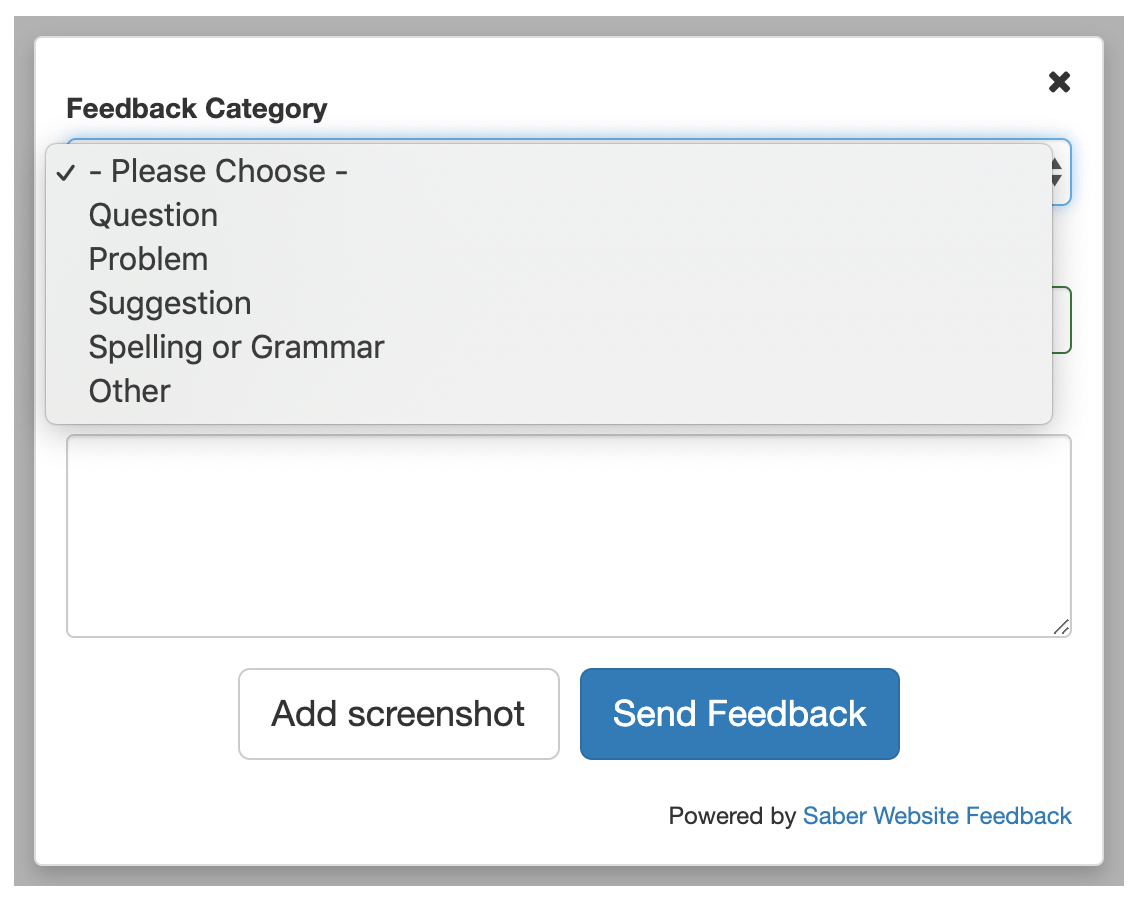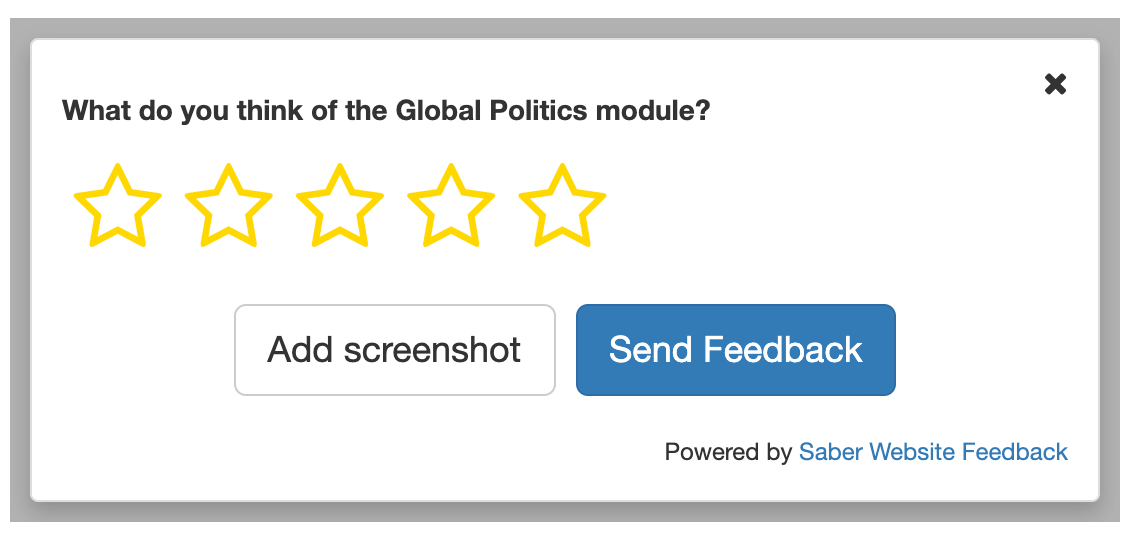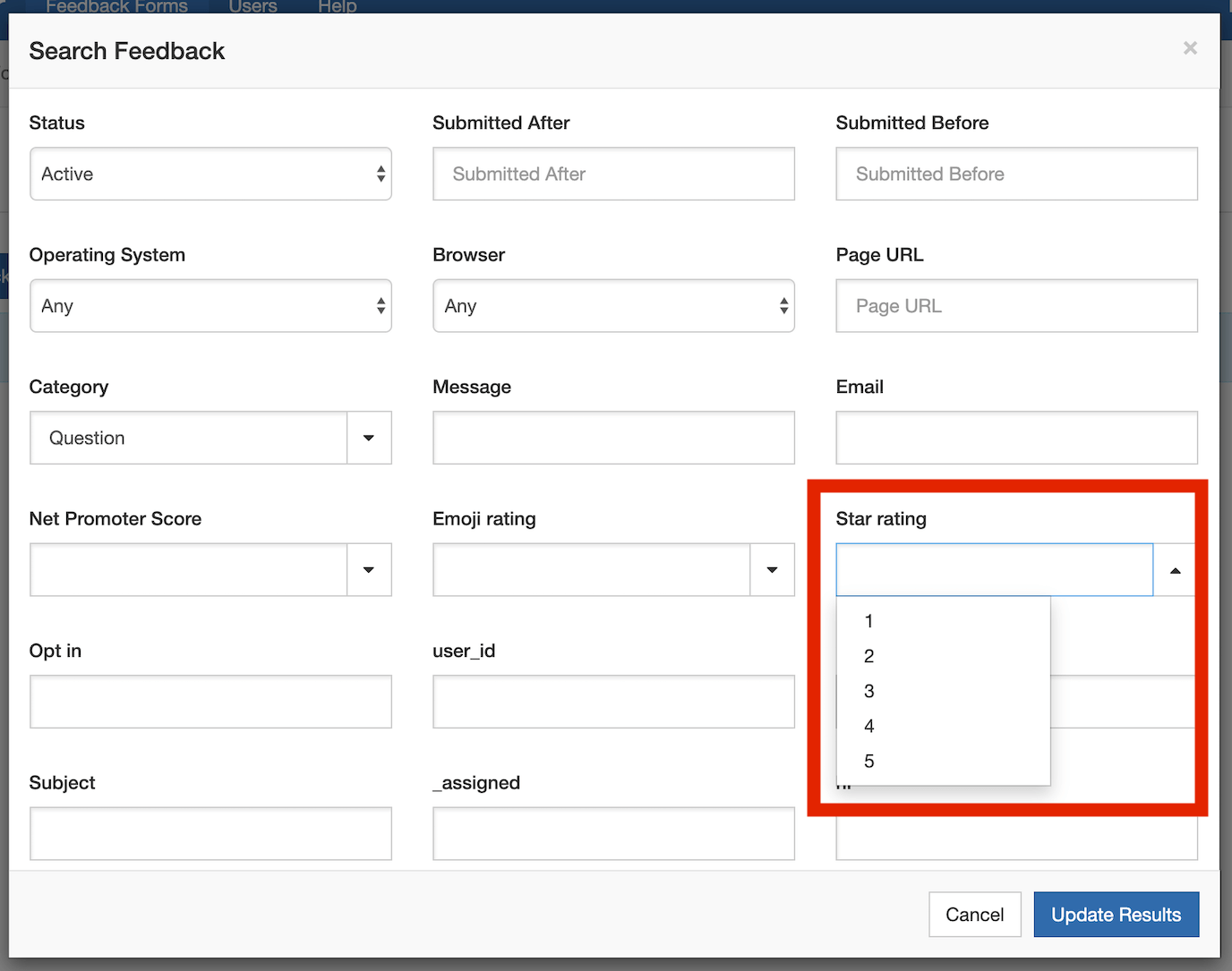There has never been a better time to run online courses. Students are used to working online, and appreciate the flexibility. Online courses are less liable to disruption, as we’ve seen with the recent pandemic. With recent advancements in technology, you also have a huge choice of learning management systems that make it easy for you to run online courses.
However, key to running a successful online course is to know that you are providing a valuable experience to your students, whether they are employees, professionals or school leavers. Assumptions you make can be wrong, and traditional end of course surveys are usually too late for you to improve poor satisfaction ratings.
With an online feedback button you can easily find out what students think about your course at all points in their learning journey.
Do feedback buttons work on learning management systems?
Yes, you don’t need a feedback button provided by Moodle to work on Moodle, for example. Many feedback buttons, like ours at Saber Feedback, are platform agnostic so can be quickly installed almost anywhere, including on LearnDash, LearnPress, LifterLMS , Sensei and many more.
Installing a website feedback widget is straightforward. You, or your web developer, just need to copy a snippet of JavaScript to your website. If you are using Saber Feedback as your feedback button, we have easy-to-follow instructions on how to install our feedback widget on your site.
As a guide, a feedback button on any learning management system can be installed in 5 minutes or less. The process really shouldn’t be complicated.
 Find out what your students think about your courses to make them better
Find out what your students think about your courses to make them better
Decide what feedback you need on your online courses
With a feedback button you can:
- Quickly identify content that is stale or out-of-date
- Correct typos and grammatical errors
- Measure student satisfaction
- Ask for suggestions and ideas
- Address problems and concerns
So what feedback do you need?
1. All types of feedback in one form
Customise your form so students first identify the type of feedback they want to provide using a dropdown menu.
Then you can either have an open form field for students to enter their feedback, or you can ask them questions that are directly relevant to the feedback type they have chosen. For this process to work properly, you need your feedback forms to support conditional logic (as ours do).
It’s also helpful to give students the option of providing screenshots with their feedback. This can be much easier for your students than describing what a problem is and where it occurs. Screenshots can also remove confusion for you, so you don’t have to go back and forth with students asking for clarification. Saber Feedback supports screenshot feedback on all form types.
 You can ask students for all types of feedback using one form
You can ask students for all types of feedback using one form
2. Specific feedback
Sometimes you might want specific feedback. Are you teaching in an area where advances are made very quickly (like medicine, for example)? In this case, you might want the feedback button on your courses to say ‘Report a mistake’ and have a feedback form geared towards this scenario.
Or you might want to conduct a quick measure of student satisfaction. So write ‘Rate our course’ on your feedback button and give students one simple satisfaction question using a scale of 1-10, stars or emojis.
One of the big advantages of feedback buttons is that they are customisable. So you should be able to get the feedback you need, when you need it.
 You can ask students for specific feedback, like this quick satisfaction survey
You can ask students for specific feedback, like this quick satisfaction survey
Decide where you want feedback to go
Student feedback should lead to a better outcome for you, whether that’s higher student satisfaction, fewer mistakes in your course material or a closer partnership with students resulting in some interesting course innovations.
To achieve these outcomes you need a simple way to collect and process feedback. It’s easy to have the initial enthusiasm to collect feedback, only to start feeling overwhelmed and under motivated when that feedback starts to appear.
A good first step is to make it as easy as possible for you to process feedback.
Would it help if feedback went direct to your inbox (or to one of your inboxes)?
Or would you prefer to see feedback in a special dashboard with advanced search and export options?
 Search feedback by star rating – or any other category
Search feedback by star rating – or any other category
Or do you love using Trello or Slack and think that getting feedback sent direct to one of these tools would be easiest?
Here are the integrations options that Saber Feedback offers.
Is it really worth getting ongoing feedback on your online courses?
Yes, definitely. Collecting ongoing feedback will require some extra work in terms of your course management. However, in today’s competitive learning environment you’ll need to stand out to succeed – and by harnessing student feedback you’ll be able to do that.
You’ll boost student satisfaction simply by showing you are serious about listening to feedback.
You’ll gain interesting insights and essential actions that will make your courses better.
You’ll get an edge on competitors who only ask for feedback, occasionally, in a rather old-fashioned way.
If you’re interested in getting student feedback on your online courses then please try us out at Saber Feedback. We have a 30-day free trial so you can see whether we are suitable.